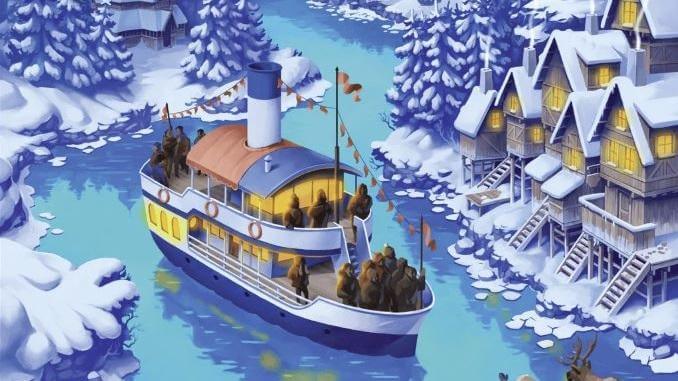Explore the Fjords with the Great Roll-and-Write Board Game Riverside

This past year saw an explosion in roll-and-write games (and their close cousins, the flip-and-write), meaning games where players roll dice and then use the results to mark something off on their personal scoresheets. Two made my top 10 games of the year, Three Sisters and Get on Board, while several others made my honorable mentions, including Riverside, which adds the twist of a modular board that changes your strategy every time you play.
In Riverside, players take on the roles of tour operators who are signing up tourists on a boat that’s cruising down a river in some icy part of the world (think Scandinavian fjords). In each round, players roll a set of six dice and pick one to represent tourists for one of the five matching boats on their scoresheets, with the option to use the sixth die to mark off more spots for a small penalty. After each roll, players may send all tourists from one boat to a matching excursion point on the board, as long as it’s within three spaces of the boat’s current location. Each excursion point has a specific multiplier value, and your reward for an excursion is that multiplier times the number of rows you’ve completed already on that boat. The river on the board doubles back on itself, so you’ll get several chances to visit any particular excursion point, and might choose to save one for later in the game when you have more rows completed. The boat moves a variable number of spaces each time, equal to the median number of the five tourist dice you roll (excluding the green captain’s die), and the game ends when the boat hits its final spot on the river. At that point, players add up the values of completed rows and excursions for each of the five boats. There’s a 15 point bonus if you have the highest low number—that is, the lowest point total from your five boats—and a 15 point penalty if you have the lowest one.
One of Riverside’s clever twists is how it divvies up the dice after each roll. One die is the aforementioned captain’s die, which you roll first and set aside. Then you roll the five tourist dice, each in a color that matches one of the boats on everyone’s scoresheets, and line them up in order to pick the median die. That die represents the temperature outside. All dice equal to or less than the median die’s value are available for any player to choose for free. (Multiple players can choose the same die in a round.) Dice with a higher value are available, but you have to mark off fire spaces on your scoresheet to use them, one per pip on the die you choose. Those spaces don’t have a specific cost, but when you’ve used them all, you can’t choose the higher-valued dice for the rest of the game. You also have the option to add the value of the captain’s die to whatever die you choose, but you have to mark off fire spaces for the pips on that die as well. You want to use all of your fire spaces before the game ends, but it’s often good to save at least some of them for a big late-game move.